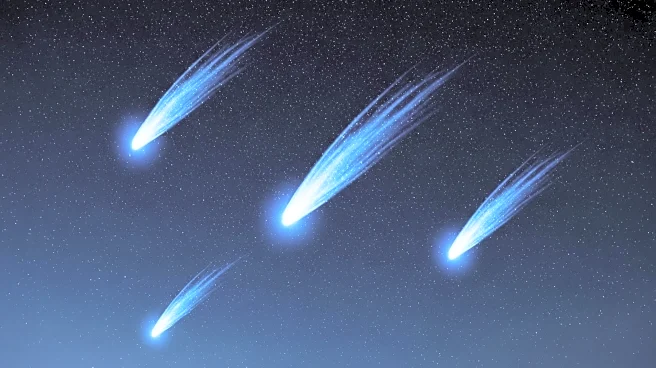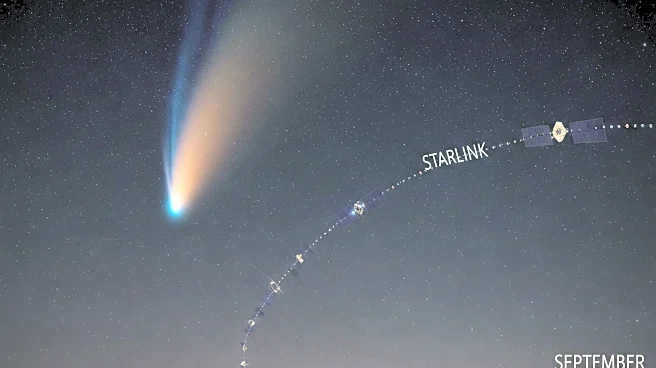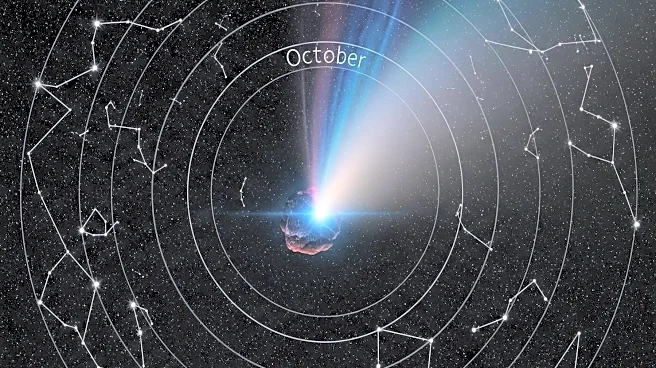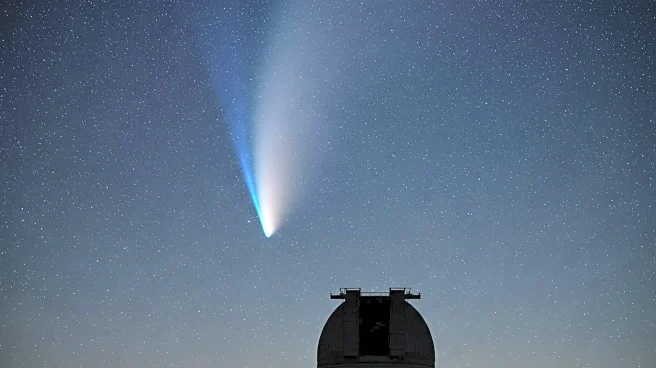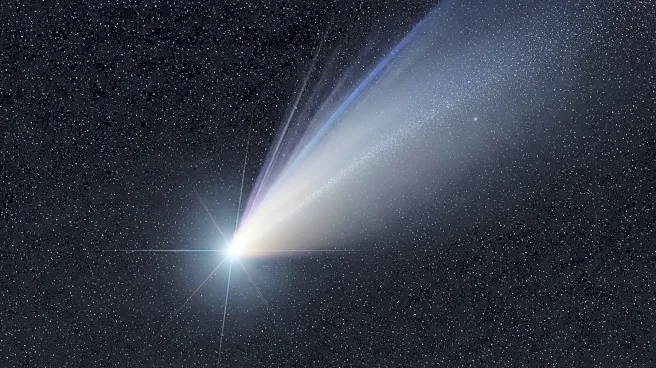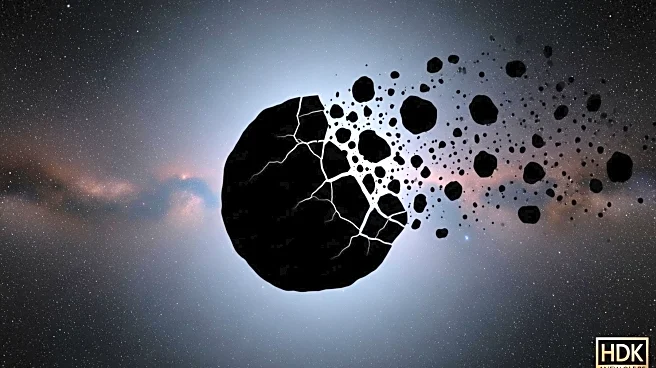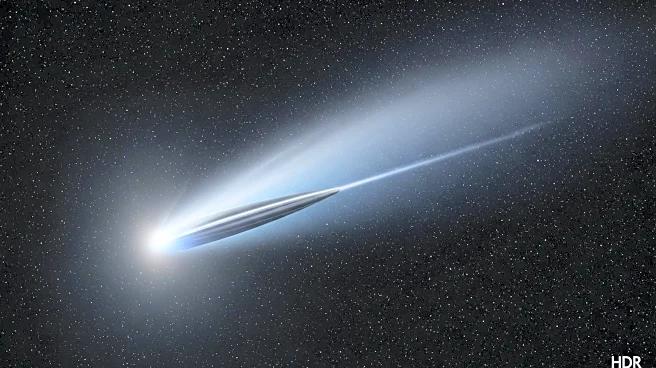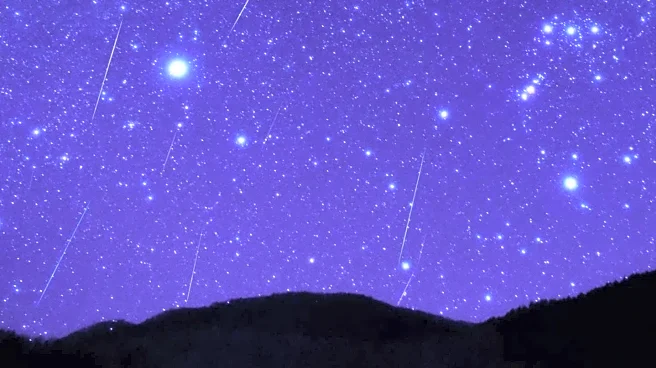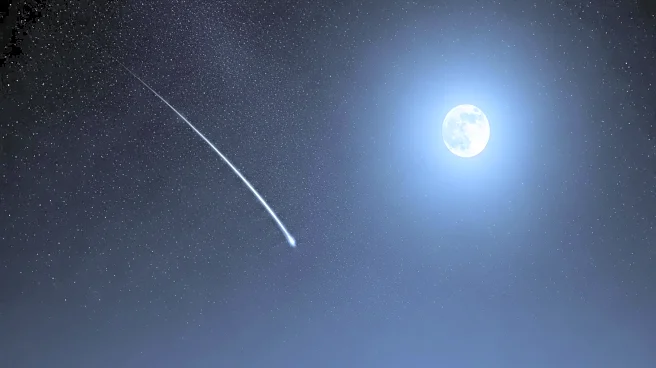What's Happening?
Astronomers are closely monitoring three comets, C/2025 K1 (ATLAS), C/2025 R2 (SWAN), and C/2025 A6 (Lemmon), which have been discovered this year and are currently being tracked for potential visibility in the fall skies. Comet C/2025 K1 (ATLAS) is approaching the Sun and may brighten significantly if it survives its closest approach, or perihelion, on October 8. However, it will remain below the horizon until late November, making it difficult to observe. Comet C/2025 R2 (SWAN), discovered by amateur astronomer Vladimir Bezugly, is currently 50 million miles from Earth and is expected to brighten as it approaches its closest point to Earth on October 19. Despite this, it is likely to remain too dim to be seen without a telescope. Comet C/2025 A6 (Lemmon), discovered in January, is generating excitement as it brightens and may become visible to the naked eye under dark skies by late October, as it approaches its perihelion on November 8.
Why It's Important?
The tracking of these comets is significant for both the scientific community and the general public. For astronomers, these comets provide an opportunity to study celestial bodies that can offer insights into the early solar system. The potential visibility of Comet Lemmon to the naked eye could engage public interest in astronomy and space science, fostering educational opportunities and inspiring future generations of astronomers. Additionally, the successful prediction of the comets' brightness and visibility can enhance confidence in astronomical forecasting models, which are crucial for planning future observations and research.
What's Next?
As the comets continue their journey, astronomers will keep a close watch on their brightness and trajectories. The potential visibility of Comet Lemmon in late October could lead to increased public interest and observation events. If Comet ATLAS survives its perihelion, it may also become a target for amateur astronomers and skywatchers. The scientific community will likely publish further observations and analyses, contributing to the broader understanding of cometary behavior and characteristics.

